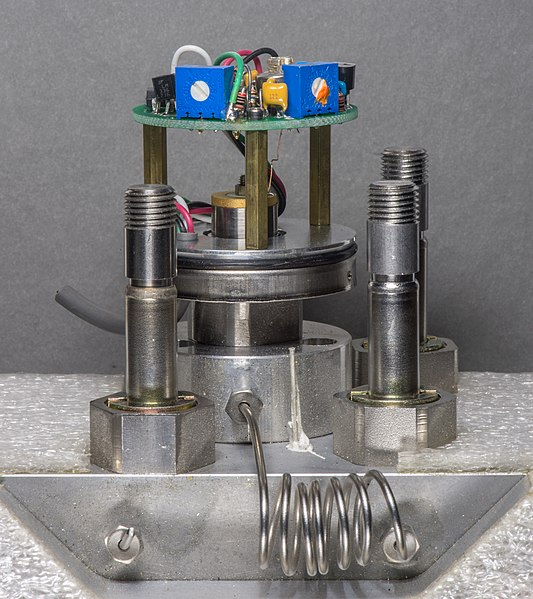Have you ever been faced with a challenge that demands the use of more than one fluid in a single process? Whether it’s for testing, production, or analysis, using multiple fluids can be tricky due to compatibility issues.
But have no fear! In this blog post, we’ll explore how transducers are essential tools for managing diverse fluids and achieving maximum compatibility between them.
We will look at all the benefits of precision-matched transducers while reviewing various case studies from industries like medical therapy and industrial HVAC systems where compatible multi-fluid setups create optimal output results in a safe and reliable way.
So whether you need to accurately measure humidity levels or test hazardous liquids, read on to learn why this technology is your best bet!
How transducer compatibility can be affected by the type of fluid used
Transducers play an essential role in modern healthcare, helping medical professionals gather data in real-time and make crucial decisions that can mean the difference between life and death. But the importance of transducers can sometimes be overlooked, leading to inadequate patient care.
One factor that can drastically affect the performance of transducers is the type of fluid used. It is essential to consider the compatibility of a transducer with the fluid in which it will be used.
Any variations in temperature, viscosity, or pressure can disrupt the signal transmission, leading to distorted readings and inaccurate results.
Therefore, selecting the right type of fluid can be just as important as choosing the right equipment. It can ensure that transducers perform at their optimal level, providing accurate data and quality patient care.
Challenges associated with using incompatible liquids and gases in transducer systems
Transducer systems are an invaluable part of modern technology, used in everything from medical equipment to industrial machinery. However, one challenge that these systems face is the use of incompatible liquids and gases.
When the wrong substances are introduced into a transducer, it can lead to inaccuracies in measurement or even equipment failure. Despite the potential dangers, however, the use of incompatible materials is sometimes necessary in certain applications.
As a result, engineers must carefully consider the properties of the liquids and gases involved, as well as the potential risks and rewards of using them in a given system. By carefully balancing these factors, they can help ensure that transducers continue to operate accurately and reliably in a wide range of settings.
Benefits of using compatible fluids in transducer systems
The benefits of using compatible fluids in transducer systems are manifold, particularly when we consider continuous float level transmitters. These devices are a type of transducer that measures the level of liquid in a tank or container by floating on the surface of the fluid.
Ensuring compatibility between the fluid and the continuous float level transmitter is crucial. Compatible fluids ensure that the transmitter functions correctly, providing reliable and accurate readings. This accuracy is vital in industries where precise fluid level measurements are crucial, such as in chemical processing, water treatment, or oil and gas production.
When incompatible fluids are used, it can result in erroneous readings or even damage the continuous float level transmitter, leading to costly repairs or replacements. Thus, the compatibility of fluids in transducer systems is a cornerstone of efficient and effective operations.
What precautions should be taken when selecting a compatible fluid for a specific application
When selecting a fluid for a particular application, it’s crucial to take certain precautions to ensure a proper match. One of the most important considerations is the fluid’s composition.
Compatible fluids must have similar chemical properties and should not cause any adverse reactions or corrosion when in contact with other materials. Additionally, the fluid’s temperature range and viscosity must also align with the application’s operating conditions.
It is essential to consult with an expert to make sure that all factors are taken into account when selecting the right fluid. By doing so, you’ll prevent costly damage to your equipment and ensure optimal performance.
How specialized monitoring hardware can help ensure optimal transducer system performance
When it comes to transducer system performance, every detail counts. That’s why specialized monitoring hardware can make all the difference. It provides a level of accuracy and precision that is simply unparalleled.
By constantly monitoring the system’s performance, this hardware can detect even the slightest issues and allow for quick corrections before they become major problems. This ensures that the transducer system is always functioning optimally, resulting in more accurate measurements and improved productivity.
Investing in specialized monitoring hardware is a smart move for any business that relies on transducer systems, as it can save time and money and ultimately protect your bottom line.
To conclude, transducers are an important component of any fluid control system, and achieving a successful outcome requires taking careful consideration when selecting a compatible fluid.
In short, it takes diligence and planning to ensure reliable operation of any transducer system; however, with due diligence come many rewards, such as energy efficiency, flexibility in operation capability, and ultimately more consistent results. Therefore, take time to research all possibilities prior to making a decision.

